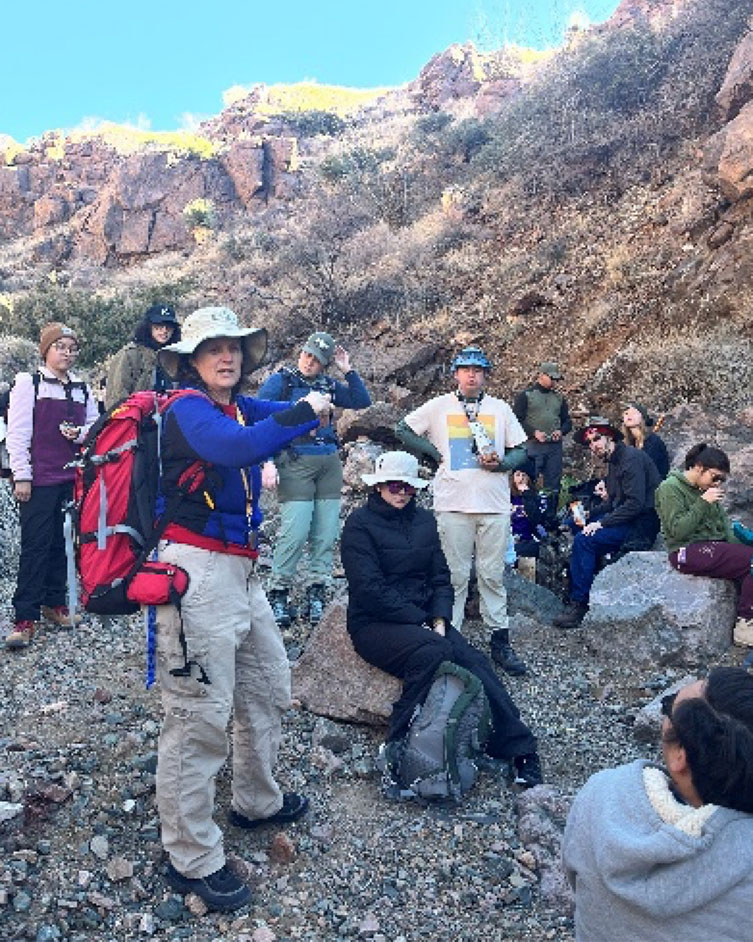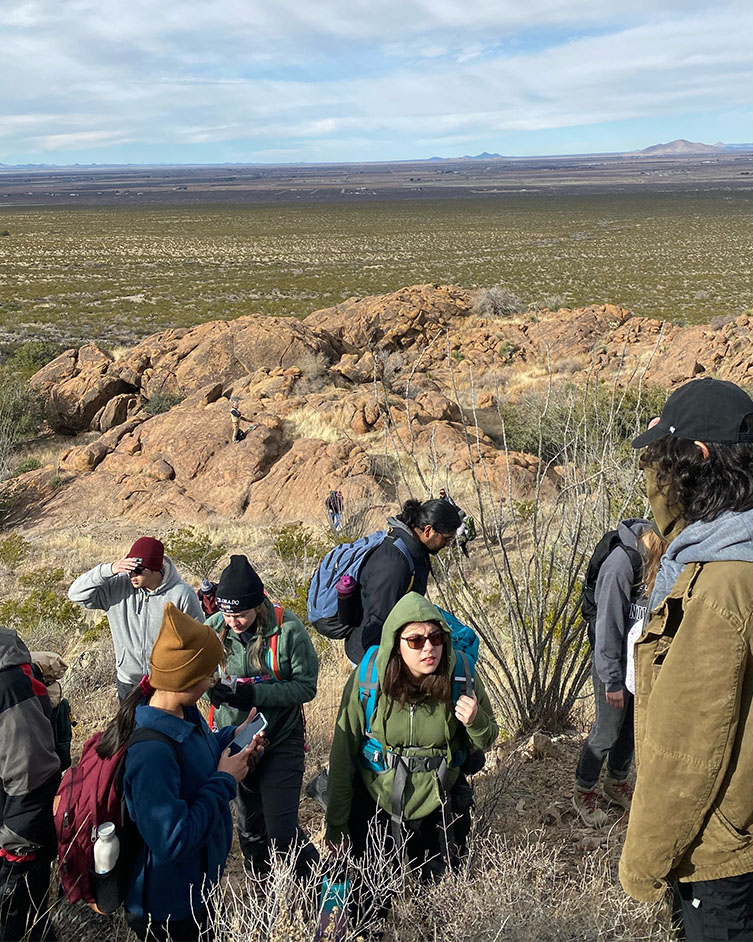EAS Students and Faculty Practice Field Skills in New Mexico and West Texas on Weeklong Field Trip
As geoscientists, we know the importance of field trips in our curriculum. They offer the opportunity to explore new landscapes, broaden our knowledge, and gain hands-on experience doing disciplinary work. However, field trips can be a challenge for early-career geoscience students, particularly when it comes to sleeping, eating, and working outside.

This is where the EAS Winter Field Trip comes in.
It’s an opportunity for students to gain hands-on experience in a field setting at no cost and without the pressure of grades. What’s more, participants are instructed to collect rock and sediment samples which ultimately become the subject of undergraduate research projects.
In early January, a group of 29 NSM students, ranging from freshmen to seniors, with diverse majors (Geology, Biochemistry, Civil Engineering, etc.) completed a seven-day trip with EAS faculty in southern New Mexico and west Texas. The trip included stops at Granite Hill, Eagle’s Nest, and Capitol Dome in the Florida Mountains near the town of Deming, New Mexico. Participants then traveled to Elephant Butte Reservoir to study sedimentation of the Rio Grande River and ended the trip at a McDonald Observatory “Star Party” in the Davis Mountains of west Texas.

The trip was organized by UH EAS professors Copeland, Sisson, Murphy, Stewart, and Carlson, with help from additional faculty from Wharton County Junior College, Lone Star Community College, and the University of Texas Bureau of Economic Geology.
Dr. Snodgras-Rangel, a professor in the UH Department of Educational Leadership and Policy Studies, conducted pre- and post-trip interviews to evaluate how participants responded to the field trip. These surveys provide faculty with valuable data and insights on how to design and run successful field trips.
It was truly a win-win situation for all involved, and we look forward to planning more enriching experiences like this in the future.
